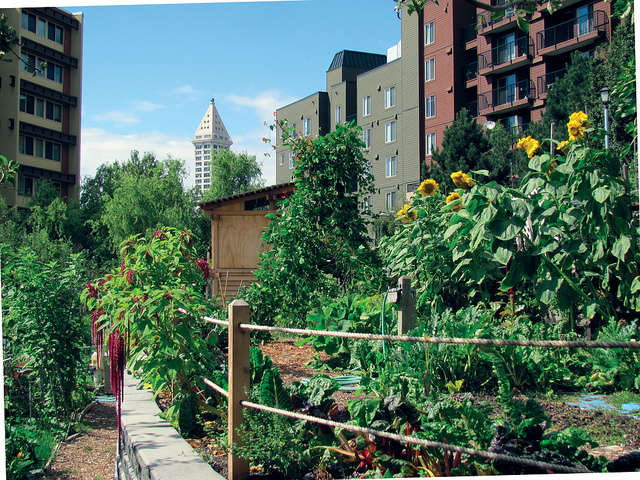Not known Incorrect Statements About City Blooming
Not known Incorrect Statements About City Blooming
Blog Article
City Blooming Fundamentals Explained
Table of ContentsUnknown Facts About City BloomingThe Buzz on City BloomingCity Blooming - TruthsCity Blooming Fundamentals ExplainedCity Blooming Fundamentals Explained
Interested in growing food to buy in the City of Chicago? Believing about beginning an area garden? Adjustments to the Chicago Zoning Statute allow agricultural uses like community gardens and city ranches in many parts of the city. Below is a listing of often asked questions relating to the policies and laws that farmers need to take into consideration when preparing a metropolitan farming job.
The zoning change does not change any various other codes handling composting, building permits, acquiring or renting City had home, company licenses or environmental contamination. There are existing codes that regulate these concerns and they stay in full result and might apply to your job. Neighborhood gardens are commonly owned or taken care of by public entities, public companies or community-based companies and kept by volunteers.
Urban farms grow food that is intended to be offered, either on a not-for-profit or for-profit basis. Due to their business purpose, metropolitan farms call for a service certificate.
Not known Facts About City Blooming
Composting is permitted however just for plant material that is produced and made use of on site. The quantity of garden compost material can not go beyond 25 cubic backyards at any type of provided time according to the standards in 7-28-715 of the City's Municipal Code. Yes. Due to the fact that the dirt at a lot of new garden sites requires changing, garden compost, soil, timber chips, or other products can be gotten to build or boost the expanding room - home and garden.

If a building license is needed then the hoophouse will be considered an accessory building. You can discover more about the building license needs by calling the Department of Buildings. The 25,000-square-foot size limitation is intended to stop a solitary community yard from dominating a given block or taking away from the block's existing household or commercial character.
The restriction does not apply to gardens found in Public Open Space (POS) districts. Can there be even more than one area garden that is 25,000 square feet on a solitary block? Secure fencing is not required, however, gardens that have big car parking areas may be called for to mount secure fencing or other landscaping attributes.
The Definitive Guide to City Blooming
B1 & B2 areas require that all business usage tasks be carried out inside. R areas limit commercial activity. The regulations mirror the objective and intent of the Zoning Code. Is secure fencing needed for metropolitan farms? Yes. Fences may be needed, Your Domain Name along with landscaping and testing, for sure parking lot and exterior work or storage areas depending upon place and the certain task happening.
Yes. Urban farms need building licenses and zoning approvals before building and construction. Various other kinds of city evaluation might be called for relying on details structures, tasks, size, landscape design, licensing, public heath and stormwater administration problems. Most of these needs are recognized in the task layout or permitting process, however, the candidate may be responsible to individually identify particular licenses or permits that might be called for.
The Department of Service Affairs and Consumer Defense can aid figure out the certain kind of business certificate that's required. Off road car park is needed for many business projects in Chicago. The called for number of auto parking spaces is based on the number of workers working on website and not the square video of the growing space.
4 Easy Facts About City Blooming Shown

A metropolitan ranch can sell garden compost material created on website, nevertheless, the procedure has to abide with the regulations in 7-28-715 of the Chicago Municipal Code. Aquaponic systems are allowed indoors on metropolitan farms in many zoning districts.
Up to five hives or colonies of honey bees might be kept as an accessory use. Beekeepers need to register with the Illinois Department of Farming. To learn more concerning the recommended zoning modification you may speak to the Division of Housing and Economic Growth, Bureau of Preparation and Zoning at 312.744.8563.
Farming in cities and urban locations An urban farm in Chicago. Urban agriculture refers to numerous methods of growing. https://experiment.com/users/cityblooming, handling, and dispersing food in urban locations. The term likewise puts on the location activities of animal husbandry, aquaculture, beekeeping, and cultivation in an urban context. Urban agriculture is identified from peri-urban farming, which occurs in country areas at the side of suburban areas.
All About City Blooming
It can involve a movement of organic growers, "foodies" and "locavores", who look for to develop social networks based on a common principles of nature and area holism. These networks can develop using formal institutional support, ending up being integrated right into regional town as a "change town" activity for lasting urban development.
The a lot more straight access to fresh veggie, fruit, and meat items that might be realised with metropolitan agriculture can boost food safety and security and food safety and security while lowering food miles, bring about reduced greenhouse gas emissions, thereby adding to environment adjustment reduction. Several of the initial evidence of urban farming comes from Mesopotamia.
Report this page